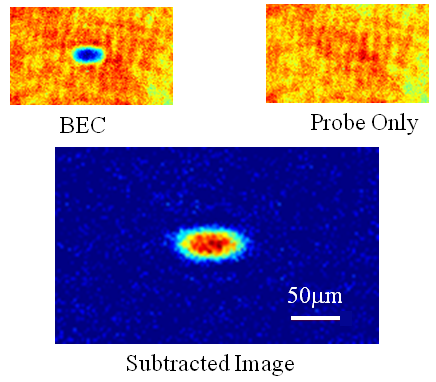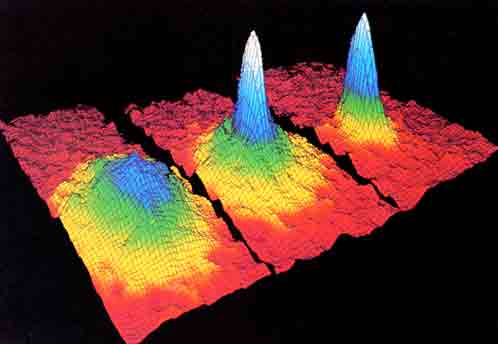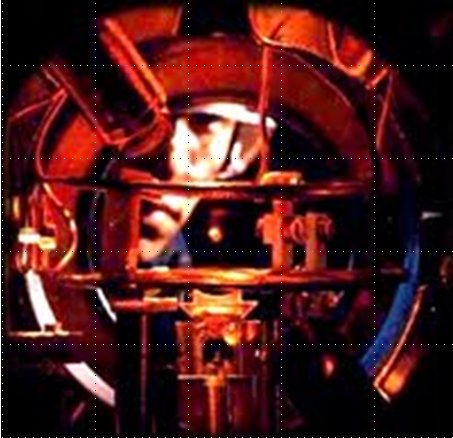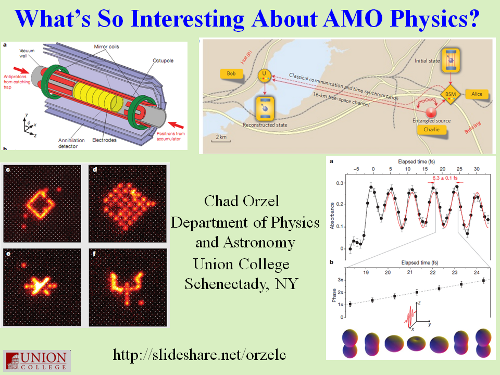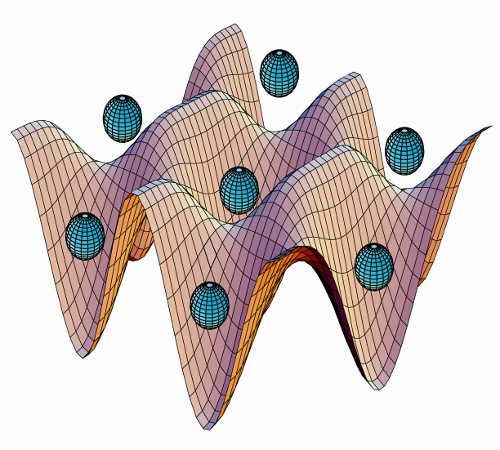Element: Rubidium (Rb) Atomic Number: 37 Mass: two “stable” isotopes, 85 and 87 amu (rubidium-87 is technically radioactive, but it’s half-life is 48 billion years, so it might as well be stable for atomic physics purposes. Laser cooling wavelength: 780 nm Doppler cooling limit: 140 μK Chemical classification: Alkali metal, column I of the periodic… Continue reading Laser-Cooled Atoms: Rubidium
Category: Experiment
Laser-Cooled Atoms: Sodium
Element: Sodium (Na) Atomic Number: 11 Mass: one stable isotope, 23 amu Laser cooling wavelength: 589 nm Doppler cooling limit: 240 μK Chemical classification: Alkali metal, column I of the periodic table. Like the majority of elements, it’s a greyish metal at room temperature. Like the other alkalis, it’s highly reactive, and bursts into flame… Continue reading Laser-Cooled Atoms: Sodium
Know Your Laser-Cooled Atoms
At the tail end of the cold-atom toolbox series, I joked about doing a “trading card” version shortening the posts to a more web-friendly length. In idly thinking about this, though, it occurred to me that if one were going to have cold-atom trading cards, it might make more sense to have them for the… Continue reading Know Your Laser-Cooled Atoms
Tools of the Cold-Atom Trade: Atom Detection and Imaging
This is probably the last trip into the cold atom toolbox, unless I think of something else while I’m writing it. But don’t make the mistake of assuming it’s an afterthought– far from it. In some ways, today’s topic is the most important, because it covers the ways that we study the atoms once we… Continue reading Tools of the Cold-Atom Trade: Atom Detection and Imaging
Tools of the Cold-Atom Trade: Evaporative Cooling
In our last installment of the cold-atom toolbox series, we talked about why you need magnetic traps to get to really ultra-cold samples– because the light scattering involved in laser cooling limits you to a temperature that’s too high for making Bose-Einstein condensation (BEC). This time out, we’ll talk about how you actually get to… Continue reading Tools of the Cold-Atom Trade: Evaporative Cooling
Tools of the Cold-Atom Trade: Magnetic Traps
We’re getting toward the end of the cold-atom technologies in my original list, but that doesn’t mean we’re scraping the bottom of the barrel. On the contrary, the remaining tools are among the most important for producing and studying truly ultra-cold atoms. Wait, isn’t what we’ve been talking about cold enough? There is, as always,… Continue reading Tools of the Cold-Atom Trade: Magnetic Traps
Tools of the Cold-Atom Trade: Magneto-Optical Traps
Today’s dip into the cold-atom toolbox is to explain the real workhorse of cold-atom physics, the magneto-optical trap. This is the technology that really makes laser cooling useful, by letting you collect massive numbers of atoms at very low temperatures and moderate density. Wait a minute, I thought we already had that, with optical molasses?… Continue reading Tools of the Cold-Atom Trade: Magneto-Optical Traps
Tools of the Cold-Atom Trade: Optical Pumping and Sisyphus Cooling
This topic is an addition to the original list in the introductory post for the series, because I had thought I could deal with it in one of the other entries. Really, though, it deserves its own installment because of its important role in the history of laser cooling. Laser cooling would not be as… Continue reading Tools of the Cold-Atom Trade: Optical Pumping and Sisyphus Cooling
Why Do Small Science?
I spent an hour or so on Skype with a former student on Tuesday, talking about how physics is done in the CMS collaboration at the Large Hadron Collider. It’s always fascinating to get a look at a completely different way of doing science– as I said when I explained my questions, the longest author… Continue reading Why Do Small Science?
Tools of the Cold-Atom Trade: Optical Lattices
Last time in our trip through the cold-atom toolbox, we talked about light shifts, where the interaction with a laser changes the internal energy states of an atom in a way that can produce forces on those atoms. This allows the creation of “dipole traps” where cold atoms are held in the focus of a… Continue reading Tools of the Cold-Atom Trade: Optical Lattices



